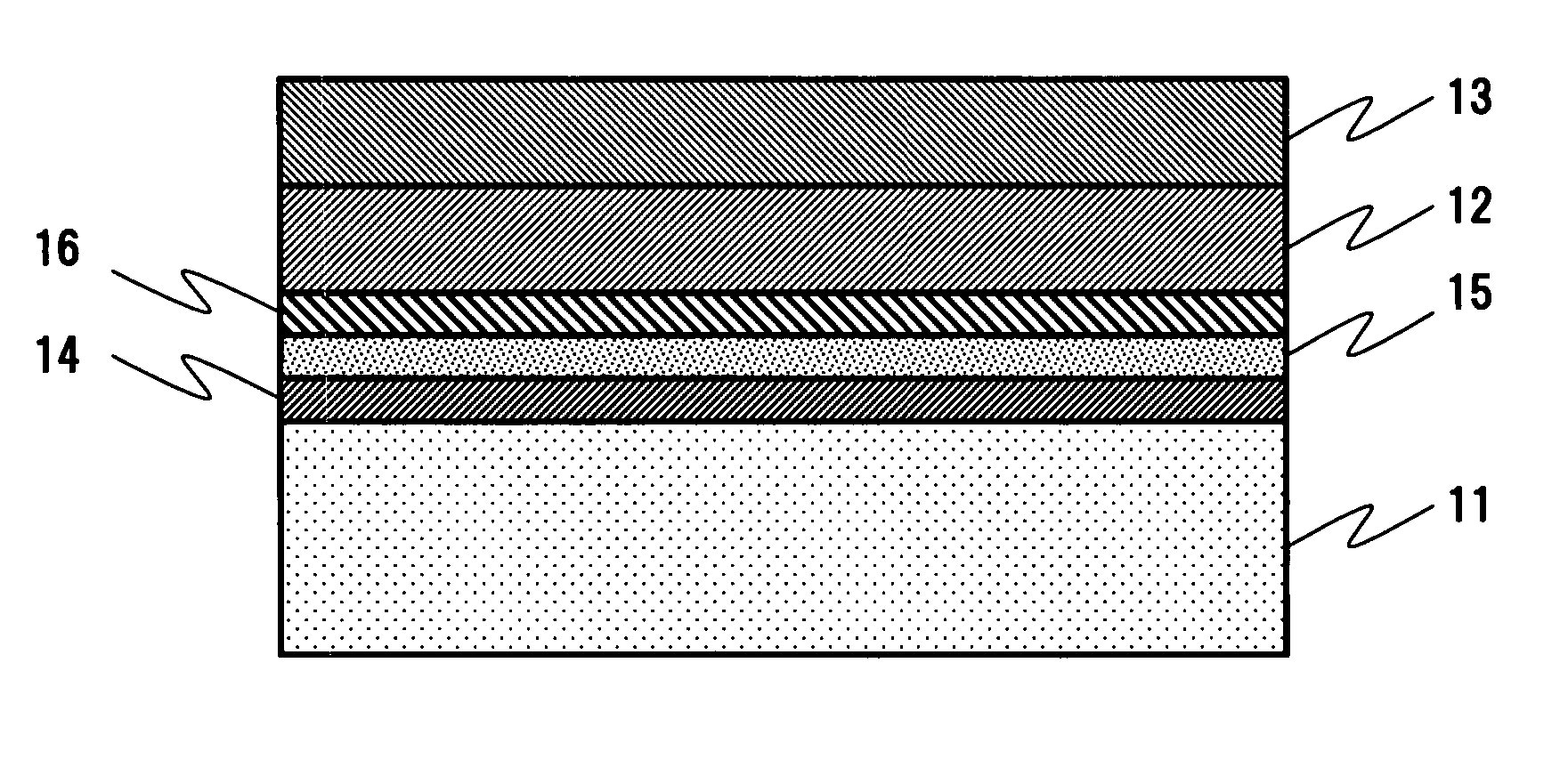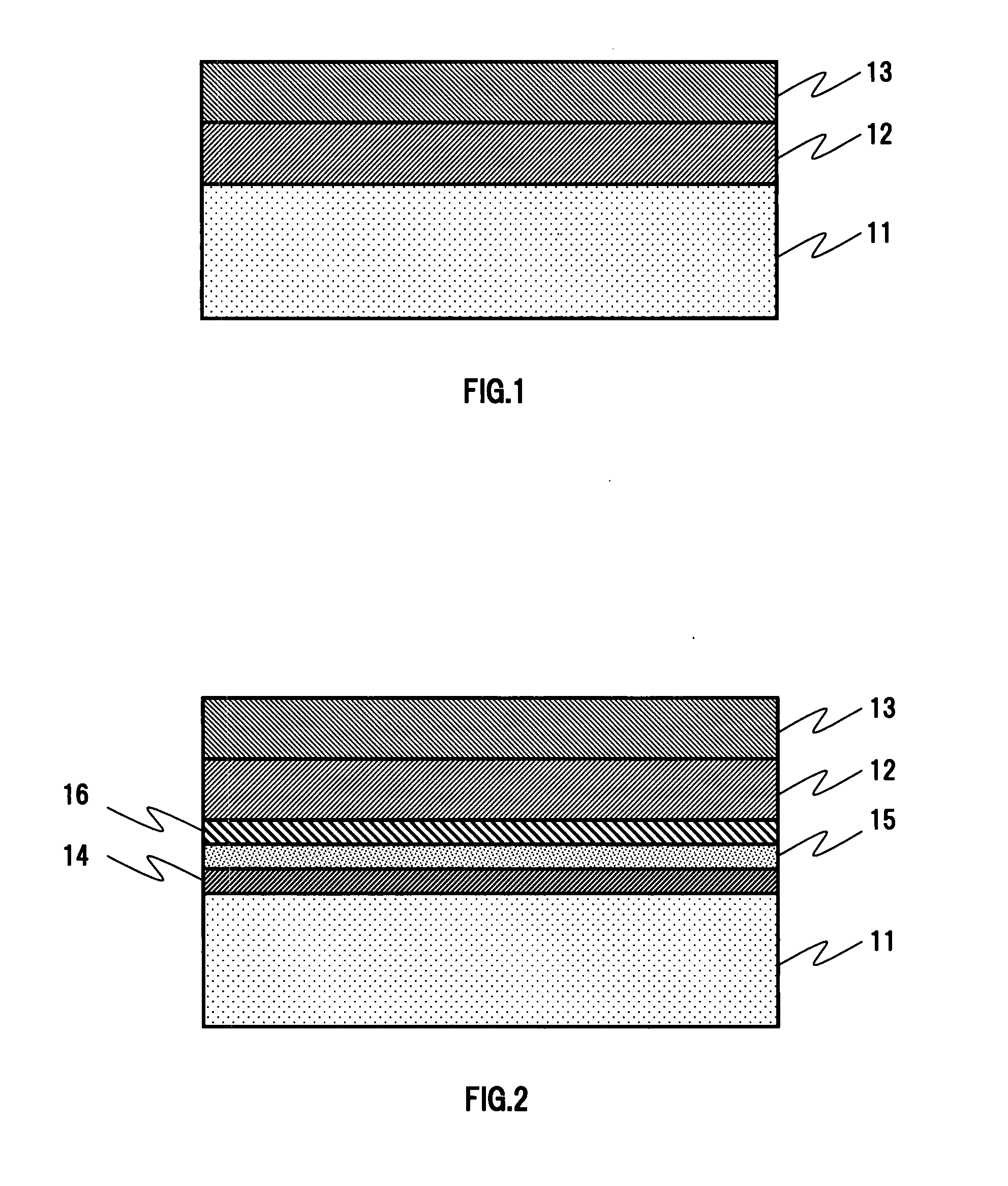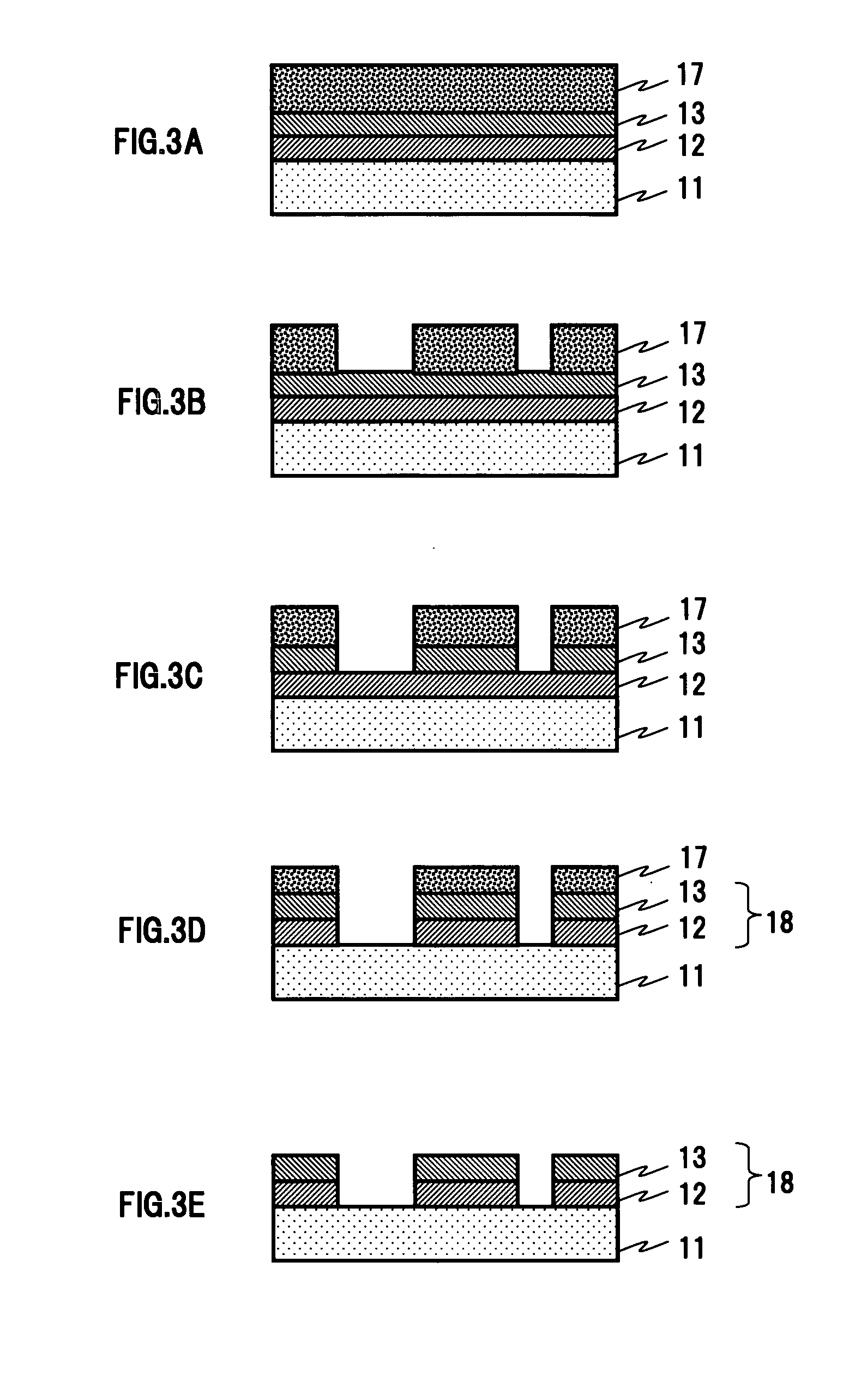Photomask Blank, Photomask and Method for Producing Those
- Summary
- Abstract
- Description
- Claims
- Application Information
AI Technical Summary
Benefits of technology
Problems solved by technology
Method used
Image
Examples
embodiment 1
(Basic Configuration of a Photomask Blank)
[0047]FIG. 1 is a sectional schematic view for explaining an example of the basic configuration of a photomask blank of the present invention. The photomask blank includes, on one principle surface of a photomask substrate 11, a metal film as a light shielding layer 12. The metal film cannot be substantially etched by chlorine-based dry etching containing oxygen ((Cl+O)-based dry etching) and can be etched by chlorine-based dry etching not containing oxygen (Cl-based dry etching) and fluorine-based dry etching (F-based dry etching). The photo mask blank further includes, on the light shielding layer 12, a metal compound film as an antireflective layer 13. The metal compound film cannot be substantially etched by chlorine-based dry etching not containing oxygen (Cl-based dry etching) and can be etched by at least one of chlorine-based dry etching containing oxygen ((Cl+O)-based dry etching) and fluorine-based dry etching (F-based dry etchin...
embodiment 2
(Phase Shift Mask Blank)
[0067] A mask blank of the present invention may be configured as a phase shift mask blank.
[0068]FIG. 2 is a sectional schematic view for explaining a structural example of a photomask blank of the present invention. The photomask blank is configured as a phase shift mask blank. A transparent or translucent phase shift layer 16 is provided on one principle surface of a photomask substrate 11. A light shielding layer 12 and an antireflective layer 13 (described above) are sequentially stacked on the phase shift layer 16. A variety of known phase shift films can be used for the phase shift layer 16, and the phase shift layer 16 may be a composite film formed by combining these films. Further, the absorber material of the phase shift layer 16 may be replaced with a halftone material to form a halftone phase shift layer.
[0069] Layers denoted as 14 and 15 in FIG. 2 are a buffer layer and an etching stopper layer. These layers are not always necessary but are p...
embodiment 3
(Example 1 of the Processing Process of a Photomask Blank)
[0075] In the present embodiment, an example of the processing process of a photomask blank will be described. The photomask blank includes an antireflective layer of a chromium compound. In the following explanation, the photomask blank is a so-called binary mask blank (see FIG. 1) in which only a light shielding layer and the antireflective layer are provided on a transparent photomask substrate.
[0076]FIGS. 3A to 3E are process drawings for explaining the processing process of the present embodiment. First, a light shielding layer 12 including a metal film having the composition and thickness described in Embodiment 1 and an antireflective layer 13 made of a chromium compound are sequentially stacked on a transparent photomask substrate 11. A resist film 17 is formed on the antireflective layer 13(FIG. 3A). In order to prevent the occurrence of problems such as the exfoliation and falling of a fine pattern in the subsequ...
PUM
| Property | Measurement | Unit |
|---|---|---|
| Thickness | aaaaa | aaaaa |
| Thickness | aaaaa | aaaaa |
| Thickness | aaaaa | aaaaa |
Abstract
Description
Claims
Application Information
 Login to View More
Login to View More - R&D
- Intellectual Property
- Life Sciences
- Materials
- Tech Scout
- Unparalleled Data Quality
- Higher Quality Content
- 60% Fewer Hallucinations
Browse by: Latest US Patents, China's latest patents, Technical Efficacy Thesaurus, Application Domain, Technology Topic, Popular Technical Reports.
© 2025 PatSnap. All rights reserved.Legal|Privacy policy|Modern Slavery Act Transparency Statement|Sitemap|About US| Contact US: help@patsnap.com



